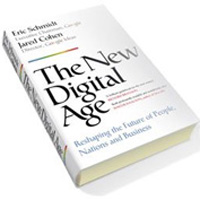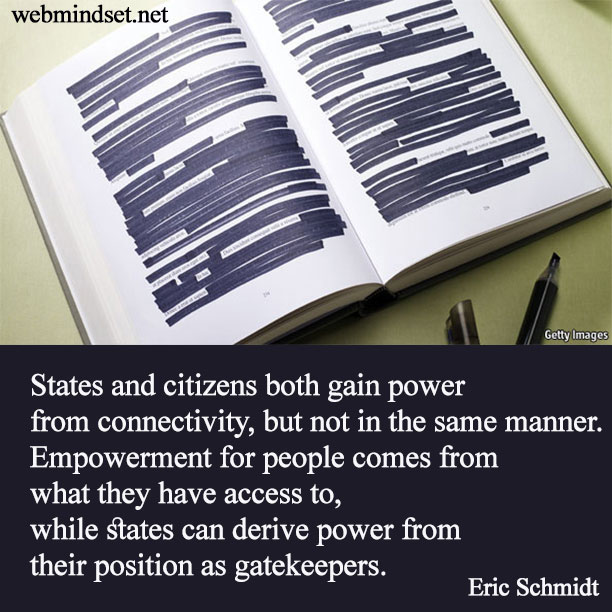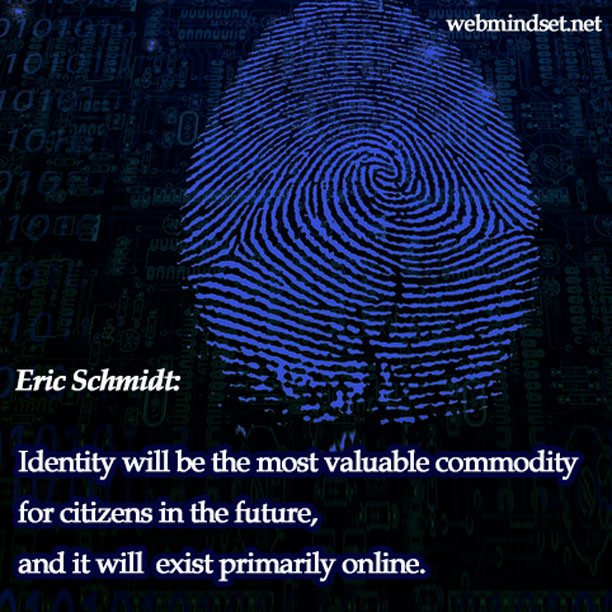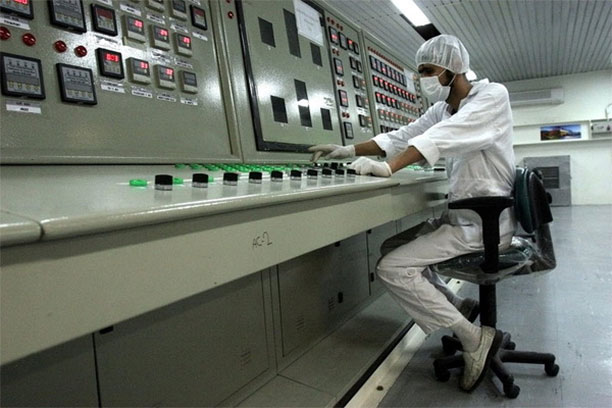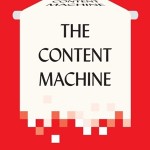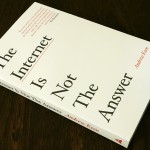It looks like a must-read for anyone interested in technology. The new digital age is written by two executives of Google, one of the most powerful corporates of the digital age.
Both authors have magnificent titles: Eric Schmidt as executive chairman of Google and Jared Cohen as director of Google Ideas, Google’s think tank dedicated to understanding global challenges and applying technological solutions.
Although it’s usually said that never judge a book by its cover, you can’t overlook all the big names who’ve endorsed the book: Bill Clinton, Henry Kissinger, Walter Isaacson, Elon Musk and Madeleine Albright.
Before digging deeper, let’s have a short look at the chapter titles. The book is arranged in seven chapters each one talking about future of something:
Chapter 1: Our Future Selves
Chapter 2: The Future of Identity, Citizenship, and Reporting
Chapter 3: The Future of States (+ Stuxnet Case)
Chapter 4: The Future of Revolution
Chapter 5: The Future of Terrorism
Chapter 6: The Future of Conflict, Combat, and Intervention
Chapter 7: The Future of Reconstruction
So at first glance, it seems that we are facing with facts from future! Although the drawbacks of technology in different areas are not forgotten, the overall view of the book is overoptimistic about future of the technology and you can classify it as utopianistic as it is expected from directors of one of the technology giants.
In the rest of this post, I have quoted a few excerpts from every chapter. But before looking at every single chapter, here you can find some central passages of the book:
Digital Empowerment
Digital empowerment will be, for some, the first experience of empowerment in their lives, enabling them to be heard, counted and taken seriously—all because of an inexpensive device they can carry in their pocket.
Decentralization of Power
On the world stage, the most significant impact of the spread of communication technologies will be the way they help reallocate the concentration of power away from states and institutions and transfer it to individuals.
Unfiltered access to the information
By 2025, the majority of the world’s population will, in one generation, have gone from having virtually no access to unfiltered information to accessing all of the world’s information through a device that fits in the palm of the hand.
Responsiveness is not equal to depth
The strength of open unregulated information-sharing platforms is their responsiveness, not their insight or depth.
Anarchy
Hundreds of millions of people are, each minute, creating and consuming an untold amount of digital content in an online world that is not truly bound by terrestrial laws.
Loss of privacy and rise of civil-society organizations seeking privacy protection
“The impact of this data revolution will be to strip citizens of much of their control over their personal information in virtual space, and that will have significant consequences in the physical world.”
“Since information wants to be free, don’t write anything down you don’t want read back to you in court or printed on the front page of a newspaper, as the saying goes. In the future this adage will broaden to include not just what you say and write, but the websites you visit, who you include in your online network, what you “like,” and what others who are connected to you do, say and share.”
“We think a wave of civil-society organizations will emerge in the next decade designed to shield connected citizens from their governments and from themselves. Powerful lobbying groups will advocate content and privacy laws. Rights organizations that document repressive surveillance tactics will call for better citizen protection.”
Blended facts and the missing chapter
There are many other interesting and important points discussed in the book. However, to be honest, it’s much easier to read a review than reading the book itself.
It’s full of facts and reports from many different political stories around the world. You will face with a mosaic of useless news and stories glued together with some insightful and thought-provoking passages like the ones I quoted above.
Anyone with experience of writing an elaborate report can guess that the book is written by a large group of Googlers gathering information and evidence from every source (sure google search is one of them) as the text has not the expected continuity. I’d prefer to call the book as a collected report endorsed by Eric Schmidt and Jared Cohen. Although it’s still a valuable source to know the mindset of the google and other similar technical giants.
Sure there’s a chapter missing in the book: The role of global corporations like Google in the future world. Which is not logical to suppose that it’s forgotten or discarded because of the book volume.
The Verge has published a review of the book with the following subheading:
In ‘The New Digital Age’ we learn what happens when Google stops being polite and starts getting real.
I should confess that from my point of view, it’s not far from reality. Not because of all the wills which could be substituted by woulds and coulds. But because of the clear message of the book which could be read between all the lines: The technology looks for a larger pie from the cake of power and politics.
[ Related article – Tribes: after effects of the technology and rise of the micro-media ]
Our future selves
Reading the chapter title, you might expect a philosophical analysis of the human identity (or self-perception) affected by technology. However, the first chapter is nothing more than an appetizer.
What Schmidt and Cohen call “our future selves” is nothing more than a summary of recent technological achievements and, an optimistic account of the technology landscape in the next few decades.
Although it has some valuable clues inside, still it was more satisfying if the chapter had a more humble title (e.g., technology and our everyday life).
Being connected will mean very different things to different people, largely because the problems they have to solve differ so dramatically.
Connectivity will not solve income inequality, though it will alleviate some of its more intractable causes, like lack of available education and economic opportunity.
Centralizing the many moving parts of one’s life into an easy-to-use, almost intuitive system of information management and decision making will give our interaction with technology an effortless feel.
There have been a series of exciting breakthroughs in thought-controlled motion technology – directing motion by thinking alone – in the past few years.
Fewer jobs require a physical presence; talented individuals will have more options available to them.
Skilled young adults in Uruguay will find themselves competing for certain types of jobs against their counterparts in Orange County.
Of course, just as not all jobs can or will be automated in the future, not every job can be conducted from a distance – but more can than you might think.
The open-source movement around the world continues to gain speed.
For governments and companies it is low cost, and for contributors, the benefits are in recognition and economic opportunities to improve and enlarge the support ecosystems.
Critical thinking and problem-solving skills will become the focus in many school systems as ubiquitous digital-knowledge tools, like the more accurate sections of Wikipedia, reduce the importance of rote memorization.
The Future of Revolutions
The fourth chapter of the book is divided into two distinct sections. The first part, about one-third of the content is talking about the future of revolutions in an optimistic sense.
You may even fill that the authors are supporting every single act of rebellion against the established structures. However, rest of the chapter emphasizes a very important point.
Technologies are facilitators of change, but the change is ultimately a human thing. Therefore, as authors conclude in this chapter, future revolutions are easier to start but harder to finish. Or to rephrase it in other form, revolutions are easier to happen, but the revolutionary outcomes will be harder to achieve.
There can be little doubt that the near future will be full of revolutionary movements, as communication technologies enable new connections and generate more room for expression.
And it’s clear that certain tactical efforts, like mobilizing crowds or disseminating material, will get easier as mobile and Internet penetration rates rise across many countries.
Throughout history, the technologies of the time have stimulated and shaped how revolutions developed.
Many leading these charges will be young, not just because so many of the countries coming online have incredibly young population…, but also because the mix of activism and arrogance in the young people is universal.
In these new revolutionary movements, there will be more part-time and anonymous activists than today, simply because citizens have greater agency over when and how they rebel.
Most people will not identify themselves with a single cause but instead, will join multiple issue-based movements spread over many countries.
This trend will both help and frustrate campaign organizers, for it will be easier to estimate and visualize their support network, but it will be less clear how interested and committed each participant is.
… It will be up to those in leadership positions to make the strategic decision as to whether their movements actually have the support of the masses, rather than being a very large echo chamber.
The rapid proliferation of revolutionary movements across newly connected societies ultimately will not be as threatening to established governments as some observers predict, because for all that communication technologies can do to transform revolutions in ways that tip the balance in favor of the people, there are elements of change that these tools cannot effect.
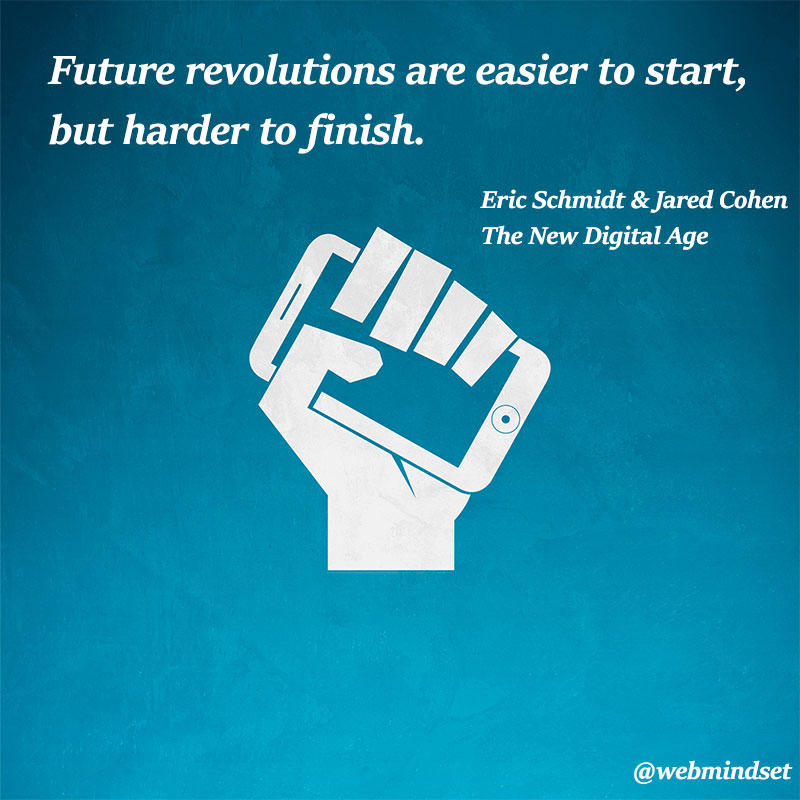
Kissinger and politics of the Facebook era
As I have mentioned above, Eric Schmidt and Jared Cohen have dedicated the fourth chapter of their book ‘The new digital age‘ to the future of revolution.
In the middle of the chapter, authors state their opinion about leading future revolutions considering the unprecedented connectivity tools provided for the rebels and opposition.
Authors believe that the technology can be a lubricating tool for starting revolutions. However, the leadership role is fundamentally different from digital herding facilitated by social networks and other new media.
Here is a passage of the book, quoting Henry Kissinger, about future of leadership in the Facebook era:
We asked the former secretary of state Henry Kissinger, who has met with and known almost every revolutionary leader of the past forty years, what is lost when that timetable is advanced [and revolutions are accelerated by technology without providing time for fostering the leaders].
“It is hard to imagine de Gaulles and Churchills appealing in the world of Facebook,” he said.
In an age of hyper-connectivity, “I don’t see people willing to stand by themselves and to have the confidence to stand up alone.”
Instead, a kind of “mad consensus” will drive the world, and few people will be willing to openly oppose it, which is precisely the kind of risk that a leader must take.
“Unique leadership is a human thing, and is not going to be produced by a mass social community,” Kissinger said.
The future of states
We have often described the Internet as a “lawless” space, ungoverned and ungovernable by design… But states have an enormous amount of power over the mechanics of the Internet in their own countries.
Perhaps the most important question in ten years’ time won’t be if a society uses the Internet, but which version of it, they use.
Governments would largely prefer that the users encounter a virtual world that allows the powers that be to mirror their physical control.
What states can’t build in reality they will try to fashion in virtual space, excluding those elements of society that the dislike, the content that contravenes laws and any potential threats they see.
National filtering and other restrictions would transform what was once a global internet into a connected series of nation-state networks.
We have identified at least three models of internet censorship:
- The blatant (e.g. China)
- The sheepish (e.g. Turkey)
- The politically and culturally acceptable (e.g. South Korea and Germany)
The future of identity, citizenship, and reporting
In the next decade, the world’s virtual population will outnumber the population of the Earth.
The impact of data revolution will be to strip citizens of much of their control over their personal information in virtual space, and that will have significant consequences in the physical world.
Our highly documented pasts will have an impact on our prospects, and our ability to influence and control how we are perceived by others will decrease dramatically.
We are what we tweet:
The communication technologies we use today are invasive by design, collecting our photos, comments, and friends into giant databases that are searchable and, in the absence of outside regulation, fair game for employers, university admissions personnel and town gossips.
… For children abd adolescents, the incentives to share will always outweight the vague, distant risks of self-exposure, even with salient examples of the consequences in public view.
For parents, the truly strategic will go beyond reserving social-networking profiles and buying domain names, and instead select names that affect how easy or hard it will be to find their children online.
Some parents will deliberately choose unique names or unusually spelled traditional names so that their children have an edge in search results.
As children live significantly faster lives online than their maturity allows, most parents will realize that the most valuable way to help their child is to have the privacy-and-security talks even before the sex-talk.
The story of the Stuxnet (as Eric Schmidt explains)
Eric Schmidt and Jared Cohen have dedicated the third chapter of their book, The New Digital Age, to the future of states.
One of the sections of the third chapter talks about digital provocation and cyber war.
Schmidt uses a cyber war definition offered by Richard Clarke:
Actions by a nation-state to penetrate another nation’s computers or networks for the purposes of causing damage or disruption.
To illustrate the possibilities and the potential extents of the cyber wars, he refers to Stuxnet virus as one of the most harmful cyber warfare’s ever developed.
Here I have summarized the Schmidt’s account of the story.
The Story of Stuxnet (pp.105 – 107, 2013’s edition)
Stuxnet was discovered in 2010 and was considered the most sophisticated piece of malware ever revealed, until a virus known as Flame, discovered in 2012, claimed that title.
Designed to affect a particular type of industrial control system that ran on the Windows operating system, Stuxnet was discovered to have infiltrated the monitoring systems of Iran’s Natanz nuclear-enrichment facility, causing the centrifuges to abruptly speed up or slow down to the point of self-destruction while simultaneously disabling the alarm systems.
Because the Iranian systems were not linked to the Internet, the worm must have been uploaded directly, perhaps unwittingly introduced by a Natanz employee on a USB flash drive
… Initial efforts to locate the creators of the worm were inconclusive, though most believed that its target and level of sophistication pointed to a state-backed effort.
The resources involved also suggested government production: Experts thought the worm was written by as many as thirty people over several months.
Sure enough, it was revealed in June 2012 that not one but two governments were behind the deployment of the Stuxnet worm.
Unnamed Obama administration officials confirmed to the New York Times journalist David E. Sanger that Stuxnet was a joint U.S. and Israeli project… Initially green-lit under President George W. Bush, the initiative, code-named Olympic Games, was carried into the next administration and in fact accelerated by President Obama, who personally authorized successive deployments of this cyber weapon.
After building the malware and testing it on functioning replicas of the Natanz plant built in the United States – and discovering that it could, in fact, cause the centrifuges to break apart, the U.S. government approved the worm for deployment.
… Less than a month after the public revelation about these cyber weapons, security experts at Kaspersky Lab, a large Russian computer security company with international credibility, concluded that the two teams that developed Flame and Stuxnet did, at an early stage collaborate.
